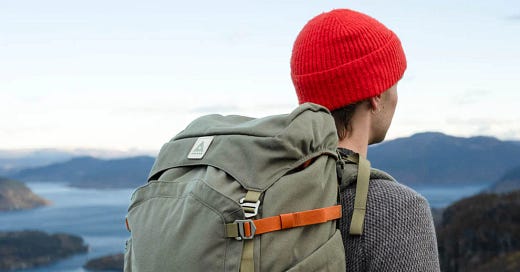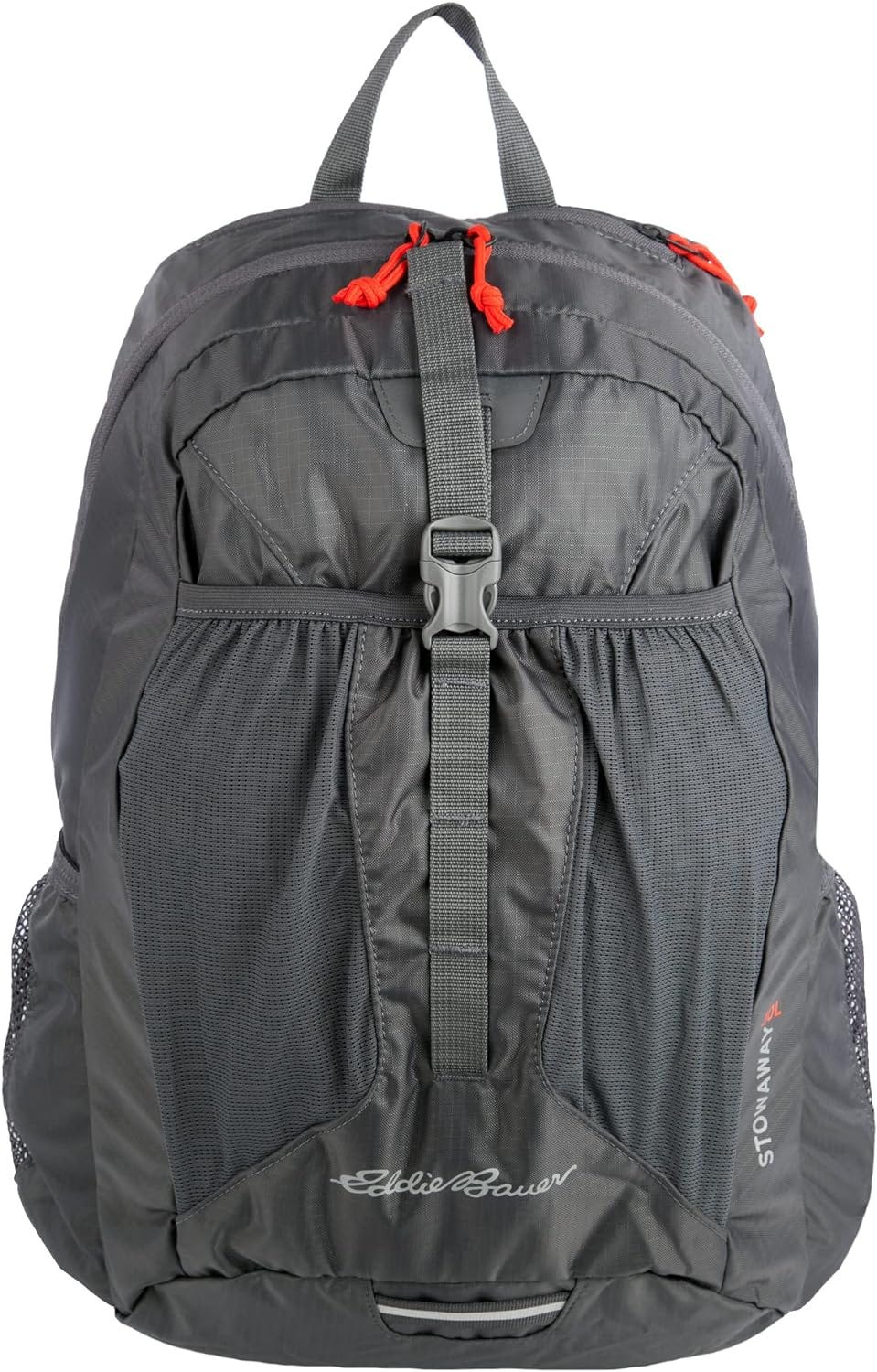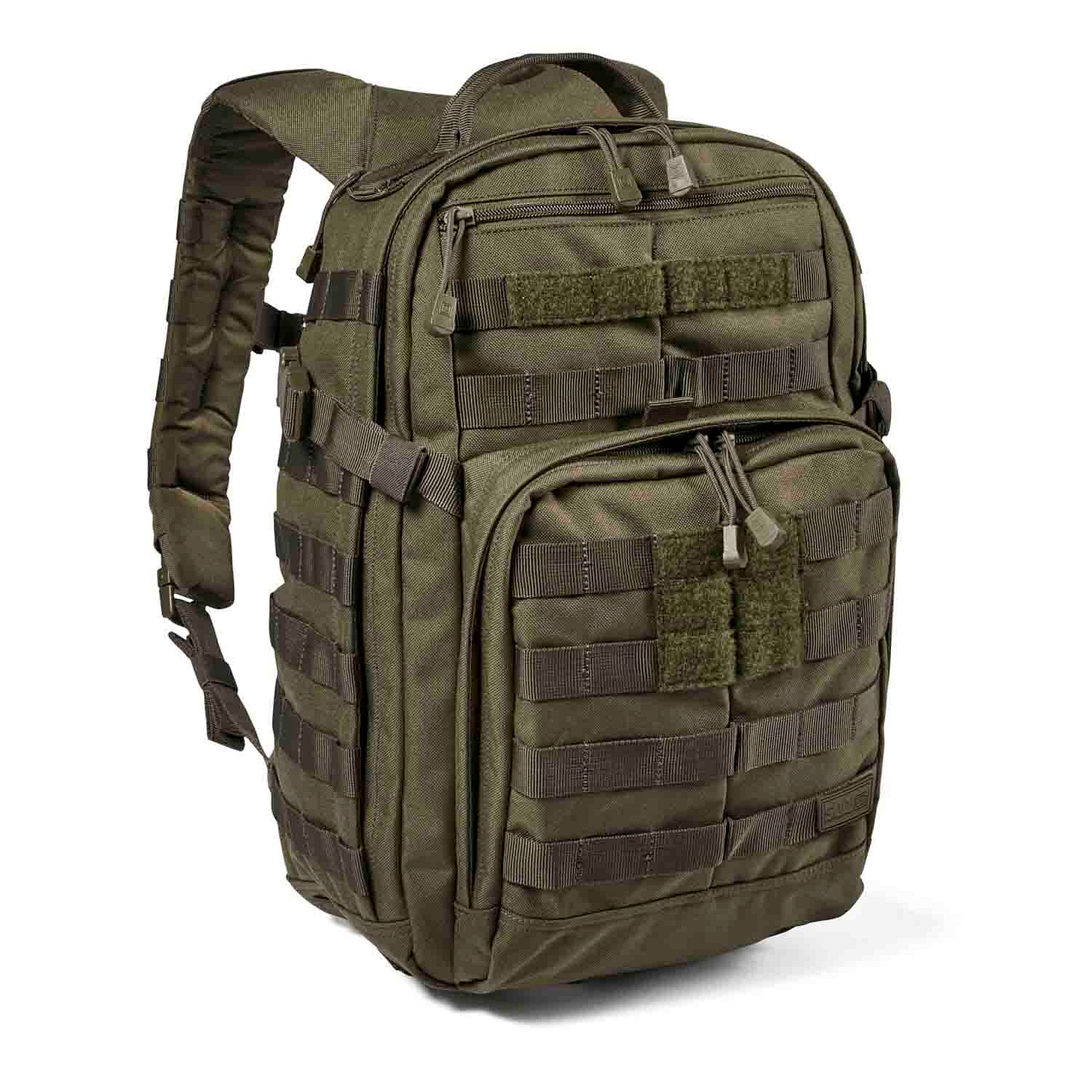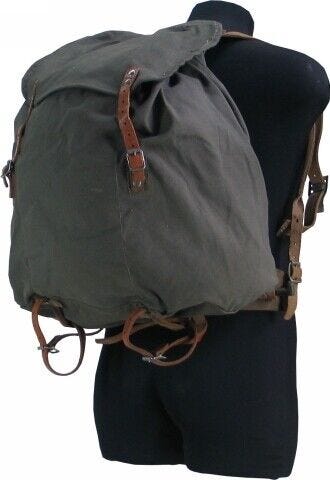As promised, we are wrapping up our gear guide by the end of February. Thankfully leap year gave us an extra day. This is part I covering backpacks on the gear side. In Part II we’ll begin covering field skillsets by going over how to pack the bag. I am looking at making a video of an appropriate loadout that I will include with that post. From here out, there will be a lot more visual instruction, which I believe is necessary given the complexity of skills vs gear. After that, we go right into fire craft, shelter deployment, first aid, navigation, and the other skills covered in the Scout Level I syllabus.
The right carrying gear for any activity, be it a short jaunt, reconnaissance or an extended exploration, serves as the linchpin for success. For a Scout Level I mission, the imperative lies in balancing the load to maintain high mobility and endurance over varying terrains. The gear chosen must reflect a deep understanding of the mission's demands, including the duration, environment, and specific tasks at hand. It's about crafting a personalized loadout that supports the mission's objectives while safeguarding the scout's well-being and operational capability.
As we talk about each pack type, note that there are civilian and military versions of each category. Whether opting for a low-profile civilian look or a more robust tactical setup, the choice should align with your goals and environment, ensuring that the gear supports rather than hinders one's objectives.
I. Understanding Basic Pack Terminology and Types
A. Day Pack or “Assault Pack”
20 to 30 liters.
In the realm of outdoor gear, particularly for those embarking on Scout Level I missions, the Day Pack (or Assault Pack in military parlance) is a fundamental component. Designed for short-term missions, usually spanning 24 hours or less, these compact, lightweight backpacks are engineered to carry the essentials required for survival and operational efficiency in the field. This allows for adequate supply of water, rations, map, compass, other gear for eventualities. The goal is ensuring that the individual is well-equipped for the duration of their hike/mission without being burdened by unnecessary weight or bulk.
Examples:
Just to show you what these types of packs can look like, here are a few.
The above is very discreet, but more than capable. You’ll notice along the middle they’ve even incorporated some MOLLE straps, which we’ll discuss later. That’s an adaptation of military tech to civilian bags, which has become more common. One thing to look at is whether it allows for attaching anything along the bottom or top. With some DIY skills, modifications can be added to support more features like that. I own something similar that is an REI brand. It has straps along the bottom for adding a bedroll or other gear.
I own one of these bags, the Rush 12 made by 5.11. It has lots of MOLLE straps on the sides, back and bottom, allowing for attachment of gear and pouches. It’s also very rugged/durable.
Vintage
I picked up one of these Soviet era packs (Veshmeshok) for $20. The simplicity and duplicative potential was often a strength of communist era designs. This is essentially a long piece of canvas sewn together on the sides, with straps that also act as a tie string at the top opening of the bag, plus square sewn to the back forming an exterior pocket. It also has straps to allow for a bedroll over the top of the bag. This was the standard Soviet/Russian soldier pack for decades since WWII.
DIY
We don’t have space to go into details here, but I thought it worth a mention that there are several ways to fashion your own bag out of everyday materials. We will revisit this topic, but for now, get something to carry your stuff.
While any of the above packs would be adequate for a 24 hour mission as listed in the Scout Level I syllabus, using this sized pack may require warm weather, or attaching additional bulk like a sleep system for colder weather to the outside of the pack. The alternative is to use the larger pack we will discuss next.
B. 3 Day Pack or Patrol Pack (AKA Medium Ruck)
30 to 50 liters. ——My Recommendation/Preference——
As we move from the discussion of day packs designed for rapid, short-duration outings/missions, to the more substantial 3 Day Pack or Patrol Pack, we enter the realm of extended preparedness. The Patrol Pack represents a step up in terms of size, capacity, and the potential to carry a more comprehensive array of supplies. Engineered for outings lasting up to 72 hours, this pack type bridges the gap between minimalistic day trips and prolonged expeditions that require more extensive gear and sustenance.
Usage Context and Versatility
The versatility of the 3 Day Pack makes it suitable for a wide range of activities including backcountry hiking, emergency preparedness (Go Bag), and multi-day scouting missions. Its design caters to the needs of individuals requiring a balance between capacity and mobility, making it an ideal choice for adventurers who might face unpredictable elements or those who prioritize readiness for various scenarios.
Examples:
The above is a nice 45L civilian version of a patrol bag.
I also have the 5.11 Rush 72. It’s a known reliable brand that’s comparably affordable, which is why I have some of their stuff. There are many other fine options. I also bought a cheaper one that failed the first day. Much like tents/tarps, and clothing, cheaper material breaks under stress.
Surplus
You can often get really good deals on used military surplus items. Do research to make sure you are purchasing authentic gear, not knock offs of inferior build quality.
Get a true ALICE Medium Pack with Frame (complete guid to spotting a fake). It’s a tried and true rucksack that veterans swear by. This system was replaced by the MOLLE system circa 2000.
As a vintage option from simpler times, here’s a Swedish WWII era M1939 Apline rucksack. It has been spotted in the hit show “The Walking Dead.” Appropriate.
The bag features one large compartment. This highlights a point we can address now.
Single Compartment Vs. Multiple Compartments
Many packs, including and especially this Swedish pack, basically have one large compartment. Some people prefer this style. They put their gear in smaller bags or pouches, and put them inside. This makes their gear easily found and modular. This brings up an additional point.
Waterproof Pack, Or Waterproof Dry Bags
If your backpack is truly waterproof, what you put inside doesn’t have to be. But for many bags that aren’t waterproof, people choose smaller water proof bags, often called “dry bags” to put their gear in, and then put inside the pack.
C. Expedition Bag or Rucksack (Sometimes called a deployment bag)
60 to 100 liters.
The term "rucksack," often used interchangeably with "backpack" in the civilian lexicon, has a rich history of military association. Designed for the rigors of extended missions, a rucksack is built to endure the demands of prolonged field use through its robust construction, modular capability, and capacity to carry substantial loads over long distances.
Examples
Here' we have a standard 75L civilian pack. I have something like this I’ve used for longer trips. People taking through trips, like the Appalachian Trail will often carry bags like this.
5.11 also makes a 65L bag called the Rush 100. I have not used it.
MOLLE and ILBE Systems
I thought it worth mentioning these modern military rucksack systems, such as those used in the U.S. Army's Modular Lightweight Load-carrying Equipment (MOLLE) system and the Marine Corps' Improved Load Bearing Equipment (ILBE) system, which showcase the evolution of the rucksack to meet contemporary operational needs. These systems provide flexibility to customize their loadouts through the addition of modular pouches and accessories, enabling the tailoring of packs to specific mission requirements or personal preferences.
Seen above, the MOLLE II Rucksack with two sustainment pouches has a capacity of 80 liters. Each sustainment pouch can hold 3 MREs. These can be purchased for between $40-$90. They are rather large and heavy though.
For the most part, these larger military bags are used to carry personal items of soldiers when they deploy from one area to another, but rarely on actual missions. Something to keep in mind. While that might be a useful application in some scenarios, the medium-sized ruck is probably the best all around pack to have, IMO.
II. Modular Accessories
In addition to the main backpack/rucksack, various types of packs and pouches can play a critical role in organizing and carrying essential gear. Each type offers unique advantages for specific situations, from quick access to essentials to efficient load distribution. Here's a brief overview of several key accessory packs:
Haversacks
Description: A small, single-shoulder bag traditionally made from cloth or leather, designed for carrying daily essentials. Sizes vary, but common dimensions are between 11" × 18" and 24" square, tailored to individual preference.
Use Case: Ideal for items needing quick access or for collecting resources along the trail. Water-resistant options include oilcloth or handmade waxed canvas.
Butt Packs
Description: Attached to the belt or the lower back of a larger pack, butt packs are compact and convenient for carrying extra supplies without the need for a full backpack.
Use Case: Perfect for carrying additional items, first aid kits, or food supplies that might be needed in a hurry.
Fanny Packs/Waist Packs
Description: Worn around the waist, these packs offer hands-free convenience and easy access to contents without removing the pack.
Use Case: Suitable for carrying smaller items such as snacks, a small water bottle, a compass, or a map. Excellent for short excursions away from base camp.
Utility Pouches
Description: Small pouches designed to attach to belts, backpacks, or MOLLE webbing, providing additional compartmentalized storage for gear.
Use Case: Organizing smaller items like fire-starting kits, multitools, or electronic devices. Their modularity makes them versatile for customized gear setups.
Hydration Carriers
Description: Specialized packs designed to carry water bladders, featuring an insulated compartment to keep water cool and a hose for easy drinking without having to stop and access the pack.
Use Case: Essential for any activity where maintaining hydration is critical, especially in hot climates or during strenuous activities.
Leg Rigs/Thigh Pouches
Description: Mounted on the thigh via straps, these pouches offer additional storage that's easily accessible without reaching into a backpack.
Use Case: Useful for carrying extra magazines, medical supplies, or tools that need to be accessed quickly without digging through other gear.
Each of these accessory packs serves a unique purpose in the broader context of gear organization and accessibility. Their selection should be based on the specific needs of the activity, the environment, and personal preference for convenience and efficiency.
III. Civilian vs Military Gear
We have mentioned this before in the guide to attire. This decision is influenced by factors like durability, modularity, capacity, and the need for discretion or tactical advantage. Two distinct approaches emerge: the Gray Man philosophy and the explicit use of tactical or military gear. Each has its unique benefits and appropriate contexts for use.
A. Gray Man Approach
The Gray Man philosophy is predicated on the idea of blending into one's environment to avoid drawing attention. In the context of gear selection, this approach emphasizes using equipment that doesn't stand out in civilian settings, thereby reducing the likelihood of becoming a target during crises or in everyday scenarios. This method is particularly beneficial in urban and populated environments where anonymity can be a significant advantage. By adopting gear that is inconspicuous, individuals can maintain a low profile, moving freely without signaling their preparedness level or tactical acumen.
Philosophy and Application in Gear Selection
Choosing gear that is effective yet appears ordinary or civilian-like.
Avoiding overtly tactical appearances to blend in with the general public.
Benefits of Blending in Urban and Populated Environments
Reduced visibility to potential threats.
Enhanced ability to move unnoticed, gather information, or exit situations discreetly.
B. Tactical/Military Gear
Conversely, tactical or military gear is designed for durability, modular capability, and increased capacity, making it suitable for environments where these attributes outweigh the need for discretion. This gear often features robust materials, extensive customization options through MOLLE (Modular Lightweight Load-carrying Equipment) systems, and designs that prioritize access and organization of equipment. The explicit use of such gear can signal a level of preparedness and deterrence, which, in specific contexts, may be desirable.
Advantages in Durability, Modular Capability, and Capacity
Enhanced longevity and resilience in harsh conditions.
Ability to customize loadouts for specific mission requirements.
Greater capacity for carrying essential supplies and equipment.
Contexts Where Tactical Advantages Outweigh the Need for Discretion
In remote or wilderness settings where survival depends on the reliability of gear.
During organized group activities or missions where tactical coordination and uniformity are crucial.
In post-disaster scenarios where the display of preparedness can establish authority or deter potential threats.
The decision between adopting a Gray Man approach or opting for tactical/military gear should be informed by a thorough assessment of the environment, objectives, and the potential risks involved. Balancing the need for discretion with the requirements for equipment performance and capacity is key to selecting the most appropriate gear for any given situation.
That wraps things up for the purposes of choosing the appropriate backpack for Scout Level I. Stay tuned, next it’s all about field skills. We'll begin with demonstrating our readiness with a complete loadout. We’ll see you there.
















Very informative and helpful post. I've had good luck finding decent bags in the used gear basement at Next Adventure in Portland. And the Andy & Bax down the street can have nice surplus.